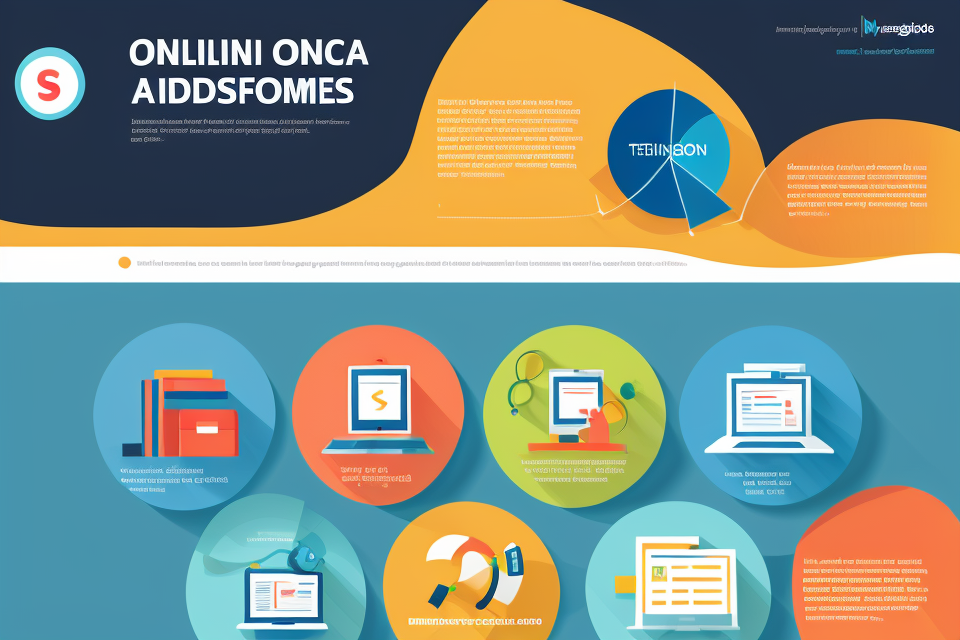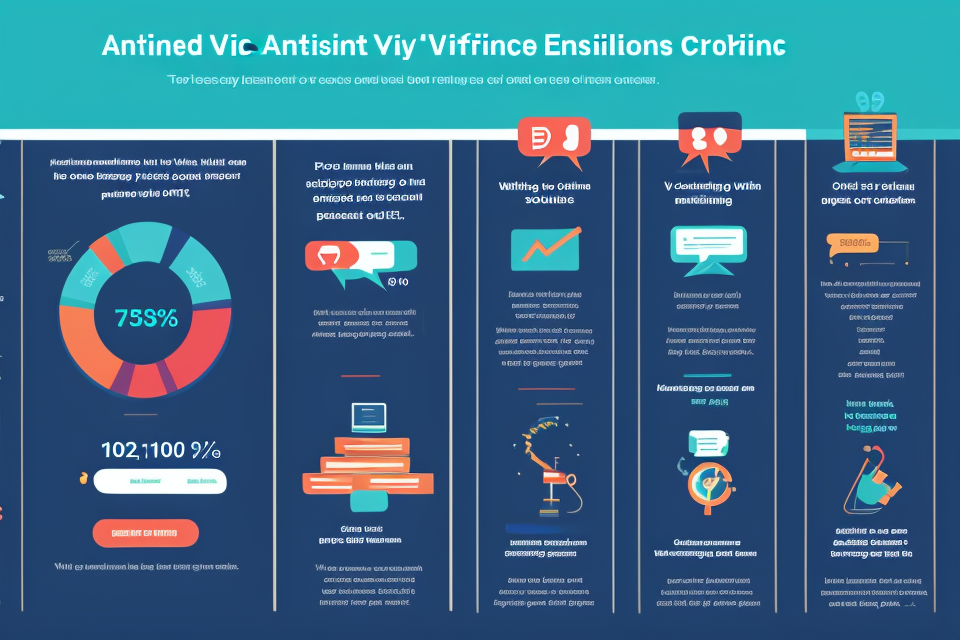
The COVID-19 pandemic has drastically changed the way we live and learn. With social distancing measures in place, online classes have become the new norm for students around the world. But the question remains, are online classes better than in-person learning? In this article, we will explore the pros and cons of online classes, and try to determine whether they are indeed superior to traditional classroom learning. We will delve into topics such as flexibility, accessibility, interaction, and effectiveness, to help you make an informed decision about your educational future. So, let’s get started and find out if online classes are the way forward or if they are just a passing fad.
The Rise of Online Classes: Why They’re Becoming More Popular
Advantages of Online Classes
Flexibility
One of the primary advantages of online classes is the flexibility they offer. Students can access course materials and complete assignments at any time, which can be especially beneficial for those with jobs or other commitments. This flexibility also allows students to learn at their own pace, which can be particularly helpful for those who may struggle with a traditional class schedule.
Accessibility
Online classes offer a level of accessibility that is not possible with traditional in-person learning. Students can participate in classes from anywhere with an internet connection, which means that students who may not have been able to attend a particular school or program can now access a high-quality education. Additionally, online classes often have smaller class sizes, which can provide students with more individual attention from instructors.
Cost-effectiveness
Online classes are often more cost-effective than traditional in-person learning. Students can save money on transportation, housing, and other expenses associated with attending a physical campus. Additionally, online classes often have lower tuition rates than traditional in-person classes, making education more accessible to a wider range of students.
Disadvantages of Online Classes
While online classes have become increasingly popular, there are several disadvantages to consider. Here are some of the main challenges that students may face when taking online courses:
- Lack of face-to-face interaction: One of the most significant drawbacks of online classes is the lack of face-to-face interaction with instructors and classmates. This can make it difficult for students to build relationships with their peers and receive feedback on their work.
- Technical issues: Another challenge of online classes is the potential for technical issues. Students may experience difficulties with internet connectivity, software compatibility, or other technical problems that can disrupt their learning experience.
- Self-motivation and discipline: Online classes require a high level of self-motivation and discipline. Students must be able to manage their time effectively, stay on top of assignments, and motivate themselves to complete coursework without the structure of in-person classes.
Despite these challenges, many students find that online classes offer a flexible and convenient way to learn. However, it’s essential to weigh the pros and cons before deciding whether online classes are the right choice for you.
In-Person Learning: The Traditional Approach to Education
Advantages of In-Person Learning
One of the primary advantages of in-person learning is the interaction with peers and instructors. When students attend classes in person, they have the opportunity to engage in face-to-face discussions, ask questions, and participate in group activities. This interaction provides students with the chance to build relationships with their classmates and instructors, which can lead to a more collaborative and supportive learning environment.
Collaboration opportunities are another advantage of in-person learning. When students are in the same physical space, they can work together on projects, share ideas, and provide feedback to one another. This collaboration can lead to a more dynamic and engaging learning experience, as students are able to build on each other’s strengths and learn from one another’s perspectives.
Immediate feedback is another advantage of in-person learning. When students are in the same physical space as their instructors, they can receive feedback on their work in real-time. This feedback can help students understand their strengths and weaknesses, and make adjustments to their learning approach accordingly. It also allows instructors to identify and address any misunderstandings or misconceptions in a timely manner, which can lead to more effective learning outcomes.
Disadvantages of In-Person Learning
Limited flexibility
One of the most significant disadvantages of in-person learning is its limited flexibility. Traditional classroom settings require students to attend classes at specific times, which can be challenging for those who have other commitments such as work or family responsibilities. This rigidity can make it difficult for students to adjust their schedules to accommodate their educational needs, resulting in missed classes and potential academic difficulties.
Attendance requirements
Another disadvantage of in-person learning is the strict attendance requirements. Students are expected to physically attend classes, which can be challenging for those who live far away or have mobility issues. Moreover, illnesses or emergencies can also disrupt a student’s attendance, leading to missed material and a potential fall behind in their studies.
Cost
In-person learning can also be expensive, particularly for students who need to pay for transportation, textbooks, and other materials. Additionally, some traditional schools may charge additional fees for extracurricular activities or parking, further adding to the financial burden of students already struggling to afford higher education. Overall, the costs associated with in-person learning can be a significant barrier for many students, limiting their access to quality education.
Comparing Online and In-Person Learning: Pros and Cons
Online Learning Pros
- Access to a wider range of courses
One of the primary advantages of online classes is the access they provide to a broader range of courses. This is particularly beneficial for individuals who live in remote areas or those who have limited access to traditional educational institutions. With online classes, students can enroll in courses offered by institutions located in different parts of the world, giving them the opportunity to study subjects that may not be available in their local area.
- Time management
Online classes offer a high degree of flexibility, allowing students to manage their time more effectively. Students can choose when and where they want to study, which can be particularly helpful for those who have work or family commitments. Online classes also allow students to work at their own pace, which can be beneficial for those who may struggle with a traditional class schedule.
- Pace of learning
Another advantage of online classes is the ability to learn at one’s own pace. This can be particularly helpful for students who may need more time to understand certain concepts or those who may want to accelerate their learning in a particular subject area. Online classes also allow students to review material as often as they like, which can help reinforce their understanding of the subject matter.
Overall, online classes offer a number of advantages over traditional in-person learning, including access to a wider range of courses, greater flexibility in managing one’s time, and the ability to learn at one’s own pace. However, it is important to consider both the pros and cons of online learning before making a decision about which type of education is best for an individual’s needs and goals.
Online Learning Cons
One of the main disadvantages of online classes is the technical requirements. Students need access to a reliable computer, a stable internet connection, and updated software to participate in online classes. In some cases, students may need to purchase additional equipment such as a webcam or headphones. This can be a barrier for some students who may not have access to the necessary technology or cannot afford to purchase the required equipment.
Another disadvantage of online classes is the lack of face-to-face interaction. In-person classes provide opportunities for students to interact with their peers and instructors in real-time. Online classes, on the other hand, rely on virtual communication which can be less engaging and less effective. This lack of interaction can lead to feelings of isolation and disconnection, which can negatively impact student learning and engagement.
Time management is another potential disadvantage of online classes. In-person classes have a set schedule, and students are expected to attend class at specific times. Online classes, however, often require students to manage their own time and schedule. This can be challenging for some students who may struggle with procrastination or time management skills. Additionally, online classes may require students to complete assignments and participate in discussions outside of their scheduled class time, which can add to the time commitment.
In-Person Learning Pros
- Collaboration Opportunities
In traditional in-person learning, students have the opportunity to collaborate and interact with their peers and instructors in real-time. This collaboration can lead to the development of new ideas, the sharing of different perspectives, and the opportunity to learn from one another. Students can engage in group discussions, debates, and team projects, all of which contribute to a more dynamic and engaging learning experience. - Immediate Feedback
One of the advantages of in-person learning is the ability to receive immediate feedback from instructors and peers. This feedback can be instrumental in helping students understand difficult concepts, identify areas where they need improvement, and adjust their learning strategies accordingly. With the help of immediate feedback, students can also build confidence in their abilities and feel more supported in their academic journey. - Face-to-Face Interaction
In-person learning provides students with the opportunity to develop relationships with their instructors and peers. This face-to-face interaction can help students feel more connected to their learning community, build trust and rapport with their instructors, and develop social skills that are essential for success in both academic and professional settings. In addition, instructors can gauge students’ understanding of the material more accurately by observing their body language, facial expressions, and verbal responses during class discussions.
In-Person Learning Cons
One of the main drawbacks of in-person learning is the limited flexibility it offers. Traditional classroom settings often follow a fixed schedule, which means that students must attend classes at specific times and on specific days. This can be particularly challenging for students who have other commitments, such as work or family responsibilities, as they may find it difficult to attend all of their classes.
Another disadvantage of in-person learning is the requirement to physically attend classes. This can be particularly challenging for students who live far away from their schools or who have mobility issues that make it difficult for them to get to class. In addition, students who are unable to attend classes in person may miss out on important information and opportunities to engage with their peers and instructors.
Finally, in-person learning can be expensive, particularly for students who need to pay for housing, transportation, and other expenses related to attending school. This can be particularly challenging for students who come from low-income backgrounds or who are otherwise financially disadvantaged.
Overall, while in-person learning has many benefits, it is important to consider these potential drawbacks when deciding whether it is the right choice for you.
Making the Right Choice: Factors to Consider
Learning Style
When considering whether to enroll in online classes or attend in-person learning, one important factor to consider is your learning style. Everyone has a unique learning style that works best for them, and understanding yours can help you make the right choice.
- Active vs. Passive: Some people learn best by actively engaging with the material, while others prefer a more passive approach. Online classes tend to be more passive, with students watching lectures and reading materials on their own time. In-person learning, on the other hand, often involves more interactive discussions and hands-on activities.
- Independent vs. Collaborative: Some people thrive in independent learning environments, while others prefer to work collaboratively with their peers. Online classes often provide more opportunities for independent learning, while in-person learning typically involves more group work and collaboration.
Considering your learning style can help you determine which type of learning environment will work best for you. If you prefer a more active, hands-on approach, in-person learning may be the better choice. If you enjoy independent learning and prefer to work at your own pace, online classes may be the better option. Ultimately, the key is to choose the learning style that works best for you and your goals.
Goals and Objectives
When deciding between online classes and in-person learning, it is crucial to consider your goals and objectives. Are you looking to further your career or simply seeking personal enrichment? Here are some factors to help you make an informed decision.
Career Development
If your primary goal is to advance your career, online classes may be the better option. With the flexibility to learn at your own pace and access course materials from anywhere, you can fit your education around your work schedule. Online courses are also often more affordable than traditional college courses, making them an attractive option for those looking to upskill without breaking the bank.
However, it is essential to note that not all online courses are created equal. Some may not provide the same level of education as in-person courses, so it is crucial to do your research and ensure that the course you choose is reputable and will provide you with the skills you need to advance your career.
Personal Enrichment
If your primary goal is personal enrichment, then in-person learning may be the better option. There is no substitute for the experience of being in a classroom, interacting with professors and fellow students, and participating in discussions and debates. In-person learning provides an opportunity to expand your knowledge and develop new skills, as well as to form connections with others who share your interests.
However, it is essential to note that in-person learning is not without its drawbacks. Attending classes on campus can be time-consuming and expensive, and it may not be practical for those with work or family commitments. Additionally, some courses may not be available in your area, making it necessary to relocate to attend them.
In conclusion, the decision between online classes and in-person learning ultimately depends on your goals and objectives. Consider your needs, budget, and schedule, and choose the option that will best help you achieve your goals.
Resources and Support
- Access to technology
- Reliable internet connection
- Up-to-date devices and software
- Time management skills
- Ability to balance coursework with other responsibilities
- Prioritizing and organizing tasks effectively
Having access to the necessary technology is crucial for a successful online learning experience. This includes a reliable internet connection, as well as up-to-date devices and software that can handle the demands of online classes. Students who lack access to adequate technology may struggle to keep up with their coursework and may need to invest in additional equipment or software to stay on track.
In addition to technology, time management skills are essential for online learners. Balancing coursework with other responsibilities, such as work or family obligations, can be challenging. It is important for students to prioritize their tasks effectively and stay organized in order to succeed in an online learning environment. Students who struggle with time management may benefit from developing strategies such as creating schedules, setting goals, and breaking tasks into smaller steps. By taking these factors into account, students can make an informed decision about whether online classes are the right choice for them.
FAQs
1. What are online classes?
Online classes are educational courses that are conducted over the internet. Students can attend these classes from anywhere with an internet connection, and the course materials and lectures are delivered through online platforms.
2. What are the benefits of online classes?
One of the main benefits of online classes is that they provide a flexible learning environment. Students can access course materials and lectures at any time, and they can work at their own pace. This can be especially beneficial for students who have busy schedules or who live in remote areas. Additionally, online classes can be more cost-effective than in-person classes, as they do not require transportation or childcare expenses.
3. What are the drawbacks of online classes?
One of the main drawbacks of online classes is that they can be less interactive than in-person classes. Students may not have the same opportunities to engage with their instructors and classmates, which can make it harder to build relationships and ask questions. Additionally, online classes may require more self-discipline and motivation, as students must be able to manage their own time and stay on top of their coursework.
4. Are online classes as effective as in-person classes?
It depends on the subject matter and the individual student. Some students may thrive in an online learning environment, while others may struggle with the lack of face-to-face interaction. In general, online classes can be just as effective as in-person classes if the course is well-designed and the student is motivated and self-disciplined.
5. What should I consider when deciding between online and in-person classes?
There are several factors to consider when deciding between online and in-person classes. Some things to consider include the subject matter, your learning style, your schedule and availability, and your budget. It may also be helpful to talk to other students who have taken both online and in-person classes to get their perspective.


